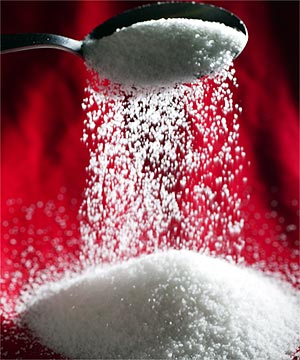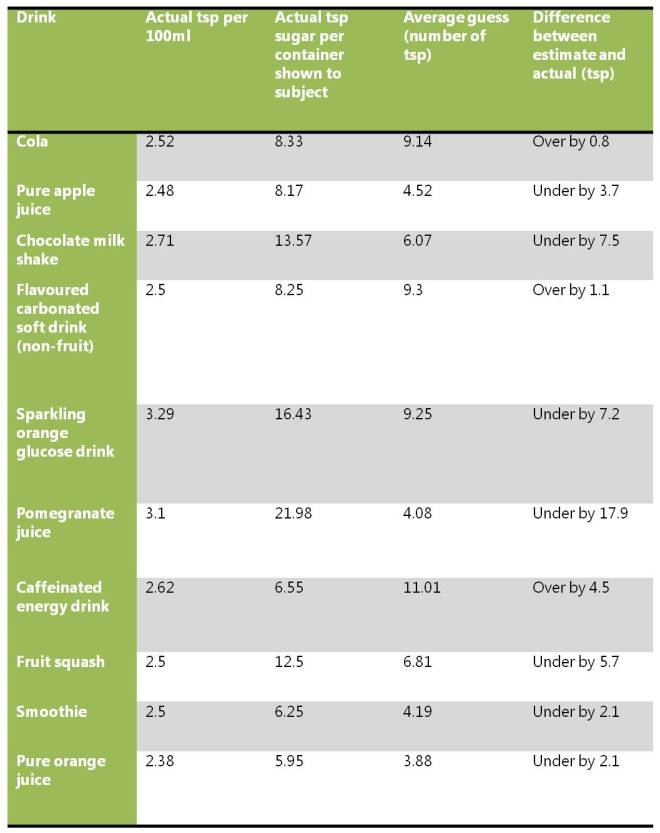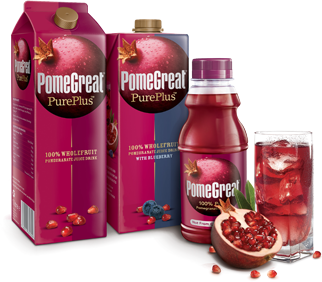At one time humans obtained most of their calories from food. That changed with the arrival of cheap sugar, and then cheaper high-fructose corn syrup.
In the late 16th century, a teaspoon of sugar cost the equivalent of ten pounds in London (1). Nowadays, 1 teaspoon of sugar costs approximately one pence (2).
Sugar added to food now accounts for nearly 16 percent of the average American’s daily intake; sweetened soft drinks make up nearly half of that (3).
In Britain, government statistics indicate that 14.2 per cent of the calories in the average diet come from added sugars (4).
Researchers at Glasgow University asked 2,005 people from across the UK to estimate how many teaspoons of sugar were in some of the UK’s most popular drinks (5). Those surveyed were also asked to estimate their average weekly liquid consumption in detail.
The findings suggest that the average person in the UK consumes 659 grams of sugar and 3,144 calories per week (which equates to 450 calories per day) through non-alcoholic liquid intake. This is the equivalent of nearly a quarter of recommended daily calories for a woman and a fifth for men.
People underestimated the amount of sugar in a serving of pomegranate juice by an average of 17.9 teaspoons, while they overestimated the amount of sugar in a serving of fruit squash by almost seven teaspoons.
It is worth noting that a number of products state they contain “100% juice” or “100% pomegranate juice”. You need to read the product label carefully because most products contain only 20 to 30 per cent pomegranate, with the rest typically apple or grape juice.
Professor Naveed Sattar said:
“While people sometimes overestimate the amount of sugar in carbonated drinks, they significantly underestimate the sugar levels in smoothies and fruit juices.
This analysis confirms that many people are perhaps not aware of the high calorie levels in many commonly consumed drinks. Some varieties of drinks such as pure fruit juices and smoothies which are perceived as “healthy” options are also very high in sugar. For many people struggling with their weight, reducing their intake of such drinks and replacing with water or diet drinks would be a sensible first target to help them lessen their calorie intake.
For some, this change might seem difficult or impossible as they admit to having a “sweet tooth.” However, it is now clear that our taste buds can be retrained over time to enjoy far less sugar in drinks (or no sugar at all). But people deserve support and encouragement to make these changes and the soft drinks industry also has a role to play here by providing drinks with less sugar or offering cheaper diet versions.”
According to information from the British Soft Drinks Association, most soft drinks do not contain sugar. Their data indicate that more than 60 per cent of the soft drinks market is now made up of diet, low calorie and no added sugar drinks, up from 30 per cent 20 years ago (6).
It is best to drink water but if you would like a fruit juice, here is a recipe for a watermelon, strawberry and rose water crush, which is relatively low in sugars and calories.
For more information about the effect of diet on health, plant-based diets, recipes and tips please sign up for my free newsletter and visit my website.
You can also join me on Facebook, Twitter and LinkedIn.
References
(3) Malik VS, Schulze MB, Hu FB. Intake of sugar-sweetened beverages and weight gain: a systematic review. American Journal of Clinical Nutrition. 2006; 84:274-288
(4) DEFRA Food Statistics Pocket Book 2011
(6) British Soft Drinks Association 2011 UK Soft Drinks Report, data from Zenith International




